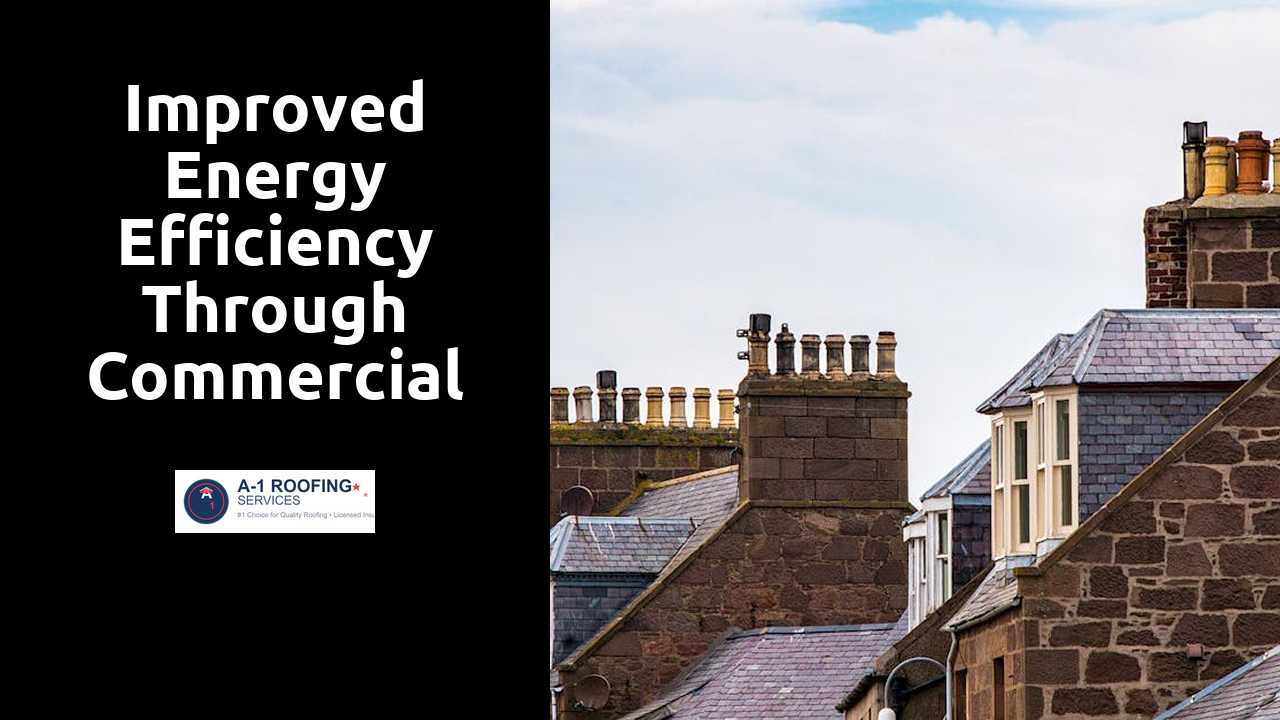
Improved Energy Efficiency through Commercial Roofing Designs
Table Of Contents
The Role of Roof Design in Energy Management
Roof design significantly influences a building's overall energy efficiency. Factors such as orientation, slope, and material selection determine how well a roof reflects heat. For instance, lighter-colored materials can minimize heat absorption, reducing the need for air conditioning during hot months. Additionally, the slope of the roof can affect drainage and ensure that moisture does not accumulate, which can lead to structural issues and increased energy demands for heating or cooling.
Integrating green roofing systems further enhances energy management by providing natural insulation. These systems often feature vegetation that not only cools the roof surface through evapotranspiration but also offers benefits such as improved air quality. Moreover, incorporating roof features like overhangs can provide shade for windows, thereby lowering indoor temperatures and reducing reliance on artificial cooling systems. Well-thought-out roof design thus creates a synergistic approach to energy efficiency, ultimately leading to lower operational costs.
Continue reading this article for more information.
Key Design Features That Enhance Efficiency
Effective roofing designs incorporate several key features that can significantly improve energy efficiency. A well-insulated roof minimizes heat transfer and optimizes indoor temperatures, reducing the need for heating and cooling. The choice of roofing materials plays a crucial role as reflective surfaces can help reduce heat buildup, particularly in warmer climates. Green roofs, with their vegetation and soil layers, not only provide excellent insulation but also contribute to stormwater management and enhance urban biodiversity.
Ventilation systems engineered into roofing designs further boost energy efficiency by allowing hot air to escape during warm months. This reduces the reliance on air conditioning and promotes a more stable indoor climate. Additionally, properly designed overhangs and shading devices can protect windows and exterior walls from direct sunlight, lowering heat gain and contributing to overall energy savings. These features work together to create a roofing system that not only protects the building but also supports a more sustainable energy footprint.
Energy-Efficient Roof Maintenance Practices
Routine maintenance is essential for maximizing the energy efficiency of commercial roofs. Inspections should be conducted to identify potential issues such as leaks, damaged insulation, or debris accumulation. These problems can lead to energy loss if left unchecked. Regular cleaning not only enhances the roof’s lifespan but also improves its reflective properties, reducing heat absorption during warmer months.
Incorporating energy-efficient practices into maintenance routines can yield significant benefits. Using eco-friendly materials for repairs and upgrades contributes to overall sustainability. Implementing preventative measures, such as adding insulation or applying reflective coatings, can enhance thermal performance. Such strategies not only help maintain efficiency but also contribute to long-term cost savings for businesses.
Regular Inspections and Their Impact on Performance
Routine inspections play a crucial role in maintaining the performance of commercial roofs. These assessments help identify potential issues such as leaks, structural damage, or insulation degradation before they escalate. Timely identification allows for prompt repairs, which can significantly extend the lifespan of the roof. Regular evaluations contribute to improved energy efficiency by ensuring that the roofing system functions optimally, thereby minimizing heat loss and reducing energy costs.
The frequency and thoroughness of inspections directly impact a roof's ability to manage energy. Inspections not only help in spotting physical defects but also in assessing the condition of insulation and reflective surfaces. Maintaining optimal roof performance requires a proactive approach. By committing to scheduled inspections, property owners can safeguard their investments, enhance energy efficiency, and foster a more sustainable building environment.
Smart Technology Integration in Roofing
The advent of smart technology has revolutionized various industries, and roofing is no exception. Integrating Internet of Things (IoT) devices into commercial roofing systems allows for real-time monitoring of environmental conditions. Smart sensors can track temperature, humidity, and energy usage, providing valuable data that can inform energy management decisions. By connecting these sensors to a centralized system, building owners gain the ability to optimize heating, ventilation, and air conditioning (HVAC) systems based on actual usage patterns.
Additionally, smart technology can enhance the overall longevity and performance of roofing materials. Predictive maintenance powered by data analytics can identify potential issues before they escalate into costly repairs. By analyzing trends and collecting performance data, facility managers can plan maintenance schedules that align with the actual wear and tear of roofing components. This proactive approach not only improves energy efficiency but also extends the lifespan of the roofing system, ultimately reducing operational costs over time.
Utilizing IoT for Energy Monitoring and Management
The integration of Internet of Things (IoT) technology in commercial roofing systems has the potential to significantly enhance energy management. Smart sensors can be installed to monitor various conditions such as temperature, humidity, and solar exposure. This real-time data allows facility managers to analyze energy consumption patterns and identify opportunities for optimization. By gathering insights on how heat diffuses through the roofing material, adjustments can be made in the building’s HVAC systems to promote energy efficiency.
Additionally, IoT enables proactive maintenance by providing alerts for issues such as leaks or structural damage. This early detection can prevent costly repairs and minimize energy loss due to compromised roofing integrity. As data continues to streamline operations, businesses can implement solutions that not only improve comfort for occupants but also contribute to sustainability efforts. The capability to monitor energy performance consistently positions IoT as a crucial component in future roofing designs.
Related Links
Impact of Commercial Roofing on Sustainable Business PracticesThe Economic Advantages of Investing in Commercial Roofing